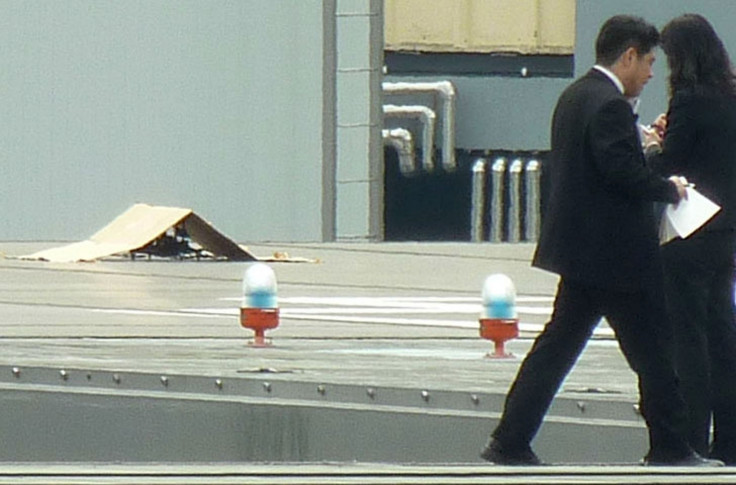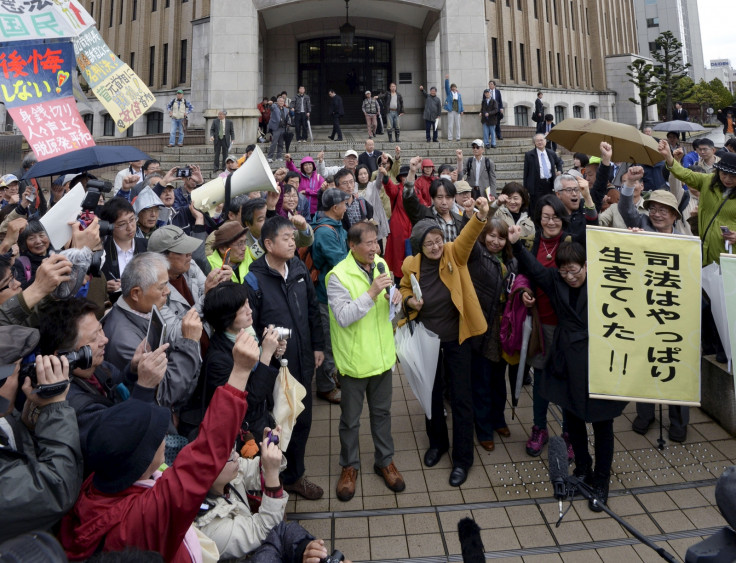Radioactive drone lands on roof of Japanese PM's office in 'silent protest' at nuclear plans

A quadcopter drone marked with a radioactive sign has landed on the roof of the Japanese prime minister's principle office and residence in Chiyoda-ku, Tokyo in what could be a silent protest against the government's nuclear energy plans.
The police and the bomb squad were called in on 22 April. The unmanned aerial vehicle (UAV), which was carrying a small camera and a water bottle, tested positive for a "minuscule" amount of radiation, which is too low to be of harm to humans, according to Japanese media.
Initially covered with a piece of cardboard, the drone was later removed, but no statement was issued by the prime minister's office. Japanese Prime Minister Shinzo Abe was not in residence at the time as he is currently in Indonesia attending the Asia-Africa conference in Jakarta.
It is not known who flew the drone onto the prime minister's official residence or even why, but there is ongoing unhappiness amongst the people in Japan over the government's nuclear plans.
Since the devastating Tōhoku earthquake and tsunami disaster in 2011 that claimed 16,000 victims and caused a major nuclear disaster at the Fukushima Daiichi nuclear power plant that released almost 30% more radiation than the Chernobyl disaster in 1986, the Japanese people have become increasingly wary about the amount of nuclear power plants in their country.
Tokyo Electric Power Co (Tepco) is still carrying out tests to help access damage to the Fukushima plant with the view to decommissioning it, but many local residents in the Fukushima Prefecture and surrounding areas close to the nuclear disaster don't believe this will happen.
Many residents of Okuma, a village near the stricken Fukushima Daiichi plant, are angry about plans by the Japanese government to dump about 30 million tonnes of radioactive debris from the disaster in a huge waste complex on their doorstep.
Japanese government auditors also reported in March that Tepco had wasted more than a third of the ¥190bn ($1.6bn) in taxpayers' money allocated for cleaning up the plant by using shoddy equipment.
Campaigning to stop nuclear reactors being restarted

Anti-nuclear protesters had petitioned the Kagoshima District Court to prevent the No 1 and No 2 reactors at Kyushu Electric Power Co's Sendai nuclear-power station in the town of Satsumasendai, southwest Japan from being restarted, fearing that the power plant was at risk from earthquakes and volcanic eruptions, as well as inadequate safety measures.
However earlier on 22 April, the Japanese court rejected their bid, which means that the two nuclear reactors will be restarted for the first time in a year and a half. Abe has been pushing for the reactors to come back online as part of his plans to cut Japan's reliance on imported fossil fuels.
The protesters told Bloomberg that they mean to appeal the court's decision: "It's the wrong decision that simply swallows all the claims made by the utility. It's a decision that lumps together mistaken facts. We'll not stop fighting for the stoppage of Kyushu Electric's Sendai reactor."
In other parts of the country however, anti-nuclear power proponents are having more success. On 13 April, the Fukui District Court blocked the Kansai Electric Power Co from restarting the No 3 and No 4 reactors at the Takahama atomic plant in Fukui, west Japan.
However, the government's energy regulator will have the final say when it comes to assessments of safety, and Bloomberg believes that any court decisions blocking nuclear reactors from restarting will likely be quashed during subsequent appeals.
© Copyright IBTimes 2025. All rights reserved.






















